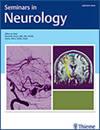学术神经内科的资金流动。
IF 2
4区 医学
Q3 CLINICAL NEUROLOGY
引用次数: 0
摘要
“资金流”一词指的是医学院与其所属大学、医院/卫生系统和临床科室之间的财务关系。根据这些实体之间的关系、财务状况、校外研究支持的水平以及捐赠和慈善活动的规模,不同组织之间的资金流安排差别很大。我们回顾了四种一般的资金流模型:“整体”模型、“生产付费”模型、“基于价值”模型和“贡献边际”模型。我们还讨论了可能影响这些模型如何运作的问题,以及它们因组织结构和财务状况而不同的原因。本文章由计算机程序翻译,如有差异,请以英文原文为准。
Funds Flow in Academic Neurology Departments.
The term "funds flow" refers to the financial relationships between the schools or colleges of medicine and its parent university, the hospital/health system, and clinical departments. Funds flow arrangements vary greatly among organizations based on the relationships between these entities, their financial status, levels of extramural research support, and size of endowments and philanthropic activities. We review four general funds flow models: the "Make Whole" Model, the "Pay for Production" Model, the "Value-Based" Model, and the "Contribution Margin" Model. We also discuss issues that can affect how these models operate and the reasons they differ depending on organizational structures and financial postures.
求助全文
通过发布文献求助,成功后即可免费获取论文全文。
去求助
来源期刊

Seminars in Neurology
医学-临床神经学
CiteScore
4.60
自引率
3.70%
发文量
65
审稿时长
6-12 weeks
期刊介绍:
Seminars in Neurology is a review journal on current trends in the evaluation, diagnosis, and treatment of neurological diseases. Areas of coverage include multiple sclerosis, central nervous system infections, muscular dystrophy, neuro-immunology, spinal disorders, strokes, epilepsy, motor neuron diseases, movement disorders, higher cortical function, neuro-genetics and neuro-ophthamology. Each issue is presented under the direction of an expert guest editor, and invited contributors focus on a single, high-interest clinical topic.
Up-to-the-minute coverage of the latest information in the field makes this journal an invaluable resource for neurologists and residents.
 求助内容:
求助内容: 应助结果提醒方式:
应助结果提醒方式:


